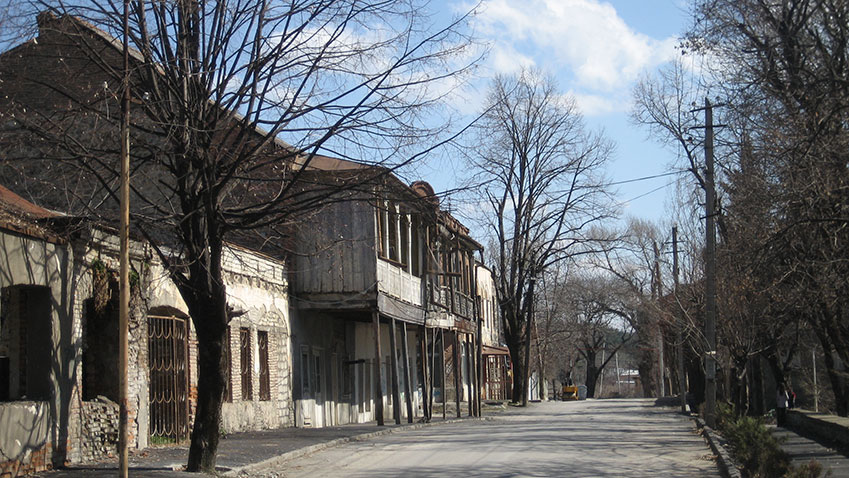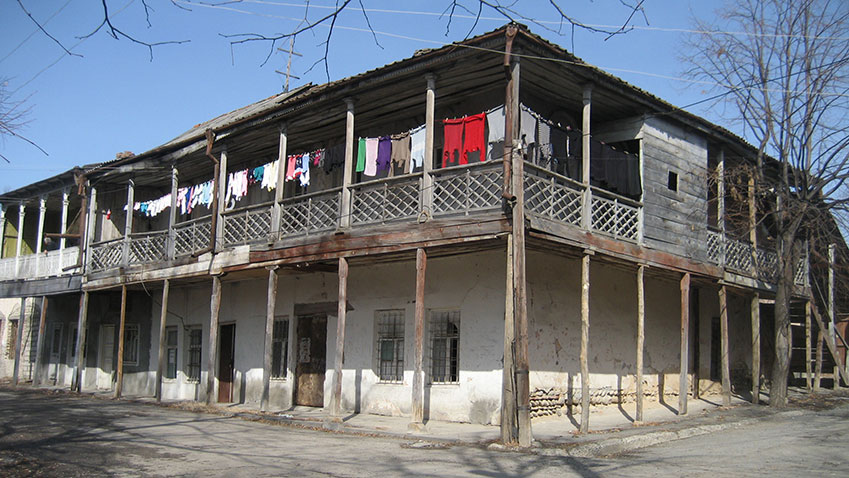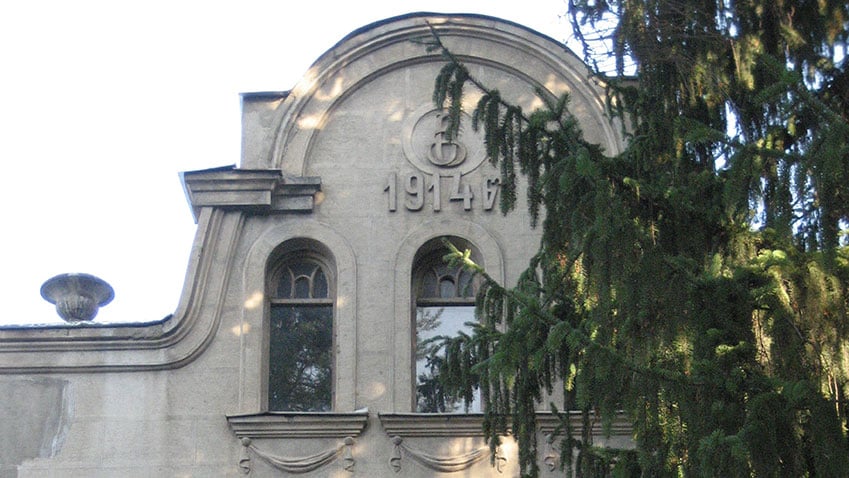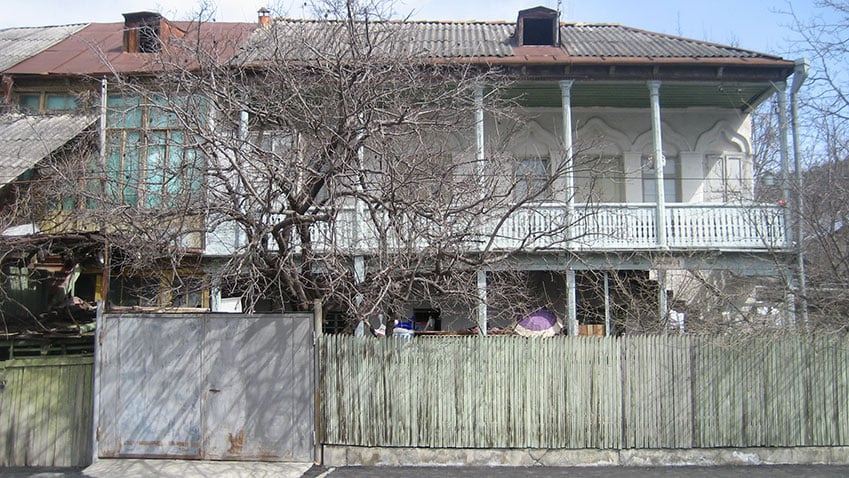COMUS Pilot town: Dusheti, Georgia


Number of inhabitants: 7 300
Area (km²): 30 km2
Dusheti is first mentioned in the historical sources in 1215, although the place had been populated since antiquity. In the late Middle Ages this was the residence of the princes of Aragvi. Later on, Dusheti developed its importance due to its location on the main military road connecting Georgia to Russia. Dusheti was officially declared a town in 1801. Following the establishment of Soviet rule, the urban culture of Dusheti declined, and private enterprises and workshops were closed. Soon afterwards, the Military Road was also re-routed. Dusheti remains a small town with a modest but remarkable historical district overlooked by the medieval palace. It is of particular national importance due to the fact that the prominent writer and statesman Ilia Chavchavadze worked here in the 19th century.
 Outputs
Outputs
Dusheti
- Preliminary Technical Files (PTF)
- Reference Plan (RP)
- Preliminary Technical Assessments (PTA) :
- PTA1-The former “Stantsia” - Dusheti local lore museum in Georgian
- PTA2-The municipal Library building (ground floor and cellar) (enhancement into multifunctional Dusheti youth centre) in Georgian
- PTA3-The Dusheti Geophysical observatory (development of recreational and visitor infrastructure) in Georgian
- PTA4-Kurko forest (walking, bike and horse trails, picnic and camping place, etc) in Georgian
- PTA5-MTS complex (rehabilitation/adaptation to the cultural-educational centre and art residence) in Georgian
- Feasibility Study (FS) :
- FS1-MTS complex (rehabilitation/adaptation to the cultural-educational centre and art residence) in Georgian
- FS2-Dusheti Geophysical Observatory or Stantsia – Local Lore Museum) in Georgian

 map
map
 Statement by the Governor about COMUS
Statement by the Governor about COMUS
 "In our view, COMUS will create the right conditions for the historic towns, like Dusheti, to elaborate efficient strategies for urban development, based on heritage resources in towns, with the active participation of local citizens, reflecting their vision for the future. We expect that the project will assist us in better using the town’s potential, especially as regards its rich and diverse cultural heritage, in order to increase the local attractiveness, develop a specific Dusheti “brand”, strengthen the sense of local identity and improve people’s income. Our main challenge is to bring back the vibrant urban life to the town. To achieve this goal, careful and democratic planning is necessary. We, the local government of Dusheti, will spare no effort to make the best use of the possibilities offered by the project, to contribute to a better future for our town."
"In our view, COMUS will create the right conditions for the historic towns, like Dusheti, to elaborate efficient strategies for urban development, based on heritage resources in towns, with the active participation of local citizens, reflecting their vision for the future. We expect that the project will assist us in better using the town’s potential, especially as regards its rich and diverse cultural heritage, in order to increase the local attractiveness, develop a specific Dusheti “brand”, strengthen the sense of local identity and improve people’s income. Our main challenge is to bring back the vibrant urban life to the town. To achieve this goal, careful and democratic planning is necessary. We, the local government of Dusheti, will spare no effort to make the best use of the possibilities offered by the project, to contribute to a better future for our town."
Vazha CHOKHELI
Governor of Dusheti municipality
 Priorities
Priorities
Heritage specificities
The Dusheti urban fabric incorporates both medieval and 19th-20th century architecture. Amongst these, the 9th century Church is the most ancient one. And yet, what makes the town of Dusheti a distinguished architectural phenomenon are the residential houses of high artistic merit. Amongst the outstanding old dwellings is the ancient “Darbazi” which is preserved within the later mid-19th century house which represents the marvelous example of Georgian Darbazi type of vernacular dwelling. The ancient archaeological layers give additional historical value to the 19th century town. Of special importance for local identity are the late medieval “White palace”, the drama theatre (since 1880) and the Geophysical Observatory (since 1935).
Local challenges
As with many other small towns in Georgia, Dusheti is striving to regain its economic prosperity, lost after the collapse of the Soviet system. Creating a stable basis for employment, education, culture and enterprise development, reducing emigration are the challenges to overcome. Heritage is regarded by Dusheti’s local government as one of the resources for achieving balanced economic development. COMUS is expected to assist local government with up-to-date methodologies and with building capacity for managing the large-scale rehabilitation works.

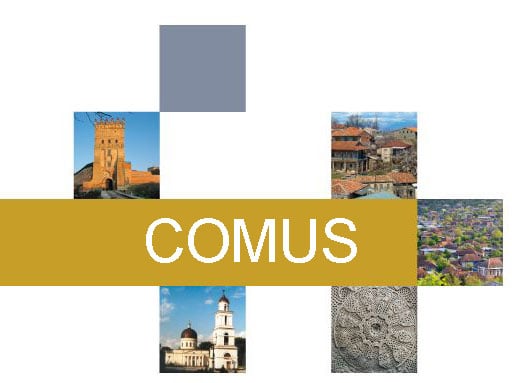
 Contacts
Contacts
Governor of Dusheti municipality

- Mr Vazha CHOKHELI
National Coordinator
- Ms Leila TUMANISHVILI
Project officer
- Ms Rusudan MIRZIKASHVILI
Project Implementation Unit
- Mr Beka GARIBASHVILI
First Deputy of Dusheti Governor, Dusheti local Project Manager - Ms Tinatin TSOTSKHALASHVILI
Dusheti LSG Coordinator, Assistant to the governor, Dusheti Municipality - Mr Shadi KHADDAD
Chief Specialist for Cultural Heritage, Dusheti Municipality - Mr Mikheil KARIAULI
Head of the unit for coordination of governor representatives, Dusheti municipality - Mr Razhden DUDAURI
Spatial Planning and Urban Development Unit, Dusheti Municipality - Mr Niko DUDAURI
Head of the Architecture Unit, Dusheti Municipality - Ms Tea PATASHURI
Director, Dusheti Museum - Ms Irma TSIKHALURI
Director General, Centre for Culture and Educatiionl of Dusheti municipality (Non-entrepreneurial – non-commercial legal entity) - Ms Ketevan TSIKLAURI
Head of the Education, Culture, Sport and Youth Department, Municipality of Dusheti - Mr Levan MNATOBISHVILI
Deputy Chair, Union of Highland and Lowland - Mr Babua ALUDAURI
Director of the Centre for Cultural Heritage and Tourism of Dusheti Municipality (Non-entrepreneurial – non-commercial legal entity) - Ms Zizi PIPIASHVILI
PR Manager of the Information Unit, Dusheti Municipality - Ms Iza JORBITASHVILI
Head of the Information Unit, Dusheti Municipality - Ms Sophia KHEKHELASHVILI
Teacher of English, 1st secondary school of Dusheti - Ms Inga CHKHUTIASHVILI
Teacher of English, 1st secondary school of Dusheti - Ms Eka ZANDUKELI
Manager of Dusheti Branch, Red Cross Georgia - Mr Tariel CHKHUTIASHVILI,
Member of Dusheti municipal council - Mr Aleksandre LAZRISHVILI
Dusheti Youth Initiative NGO
Contact e-mail
 news
news
Meeting of the Governor of Dusheti Municipality with the members of the “Local History Club”
Signature of the Declaration on Co-operation by the COMUS Mayors
Final discussion on Dusheti Reference Plan, LSG working meeting
 General information
General information








